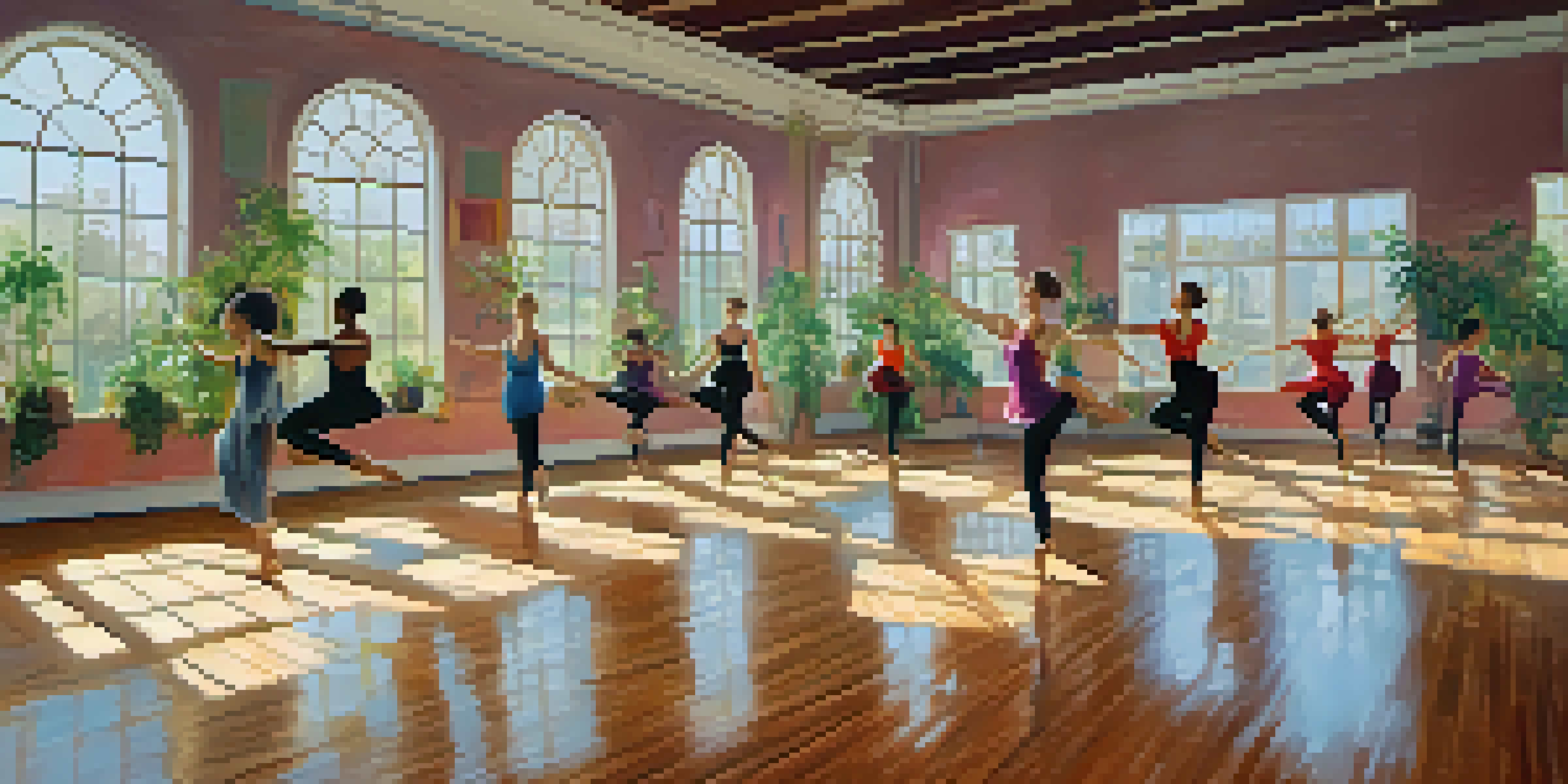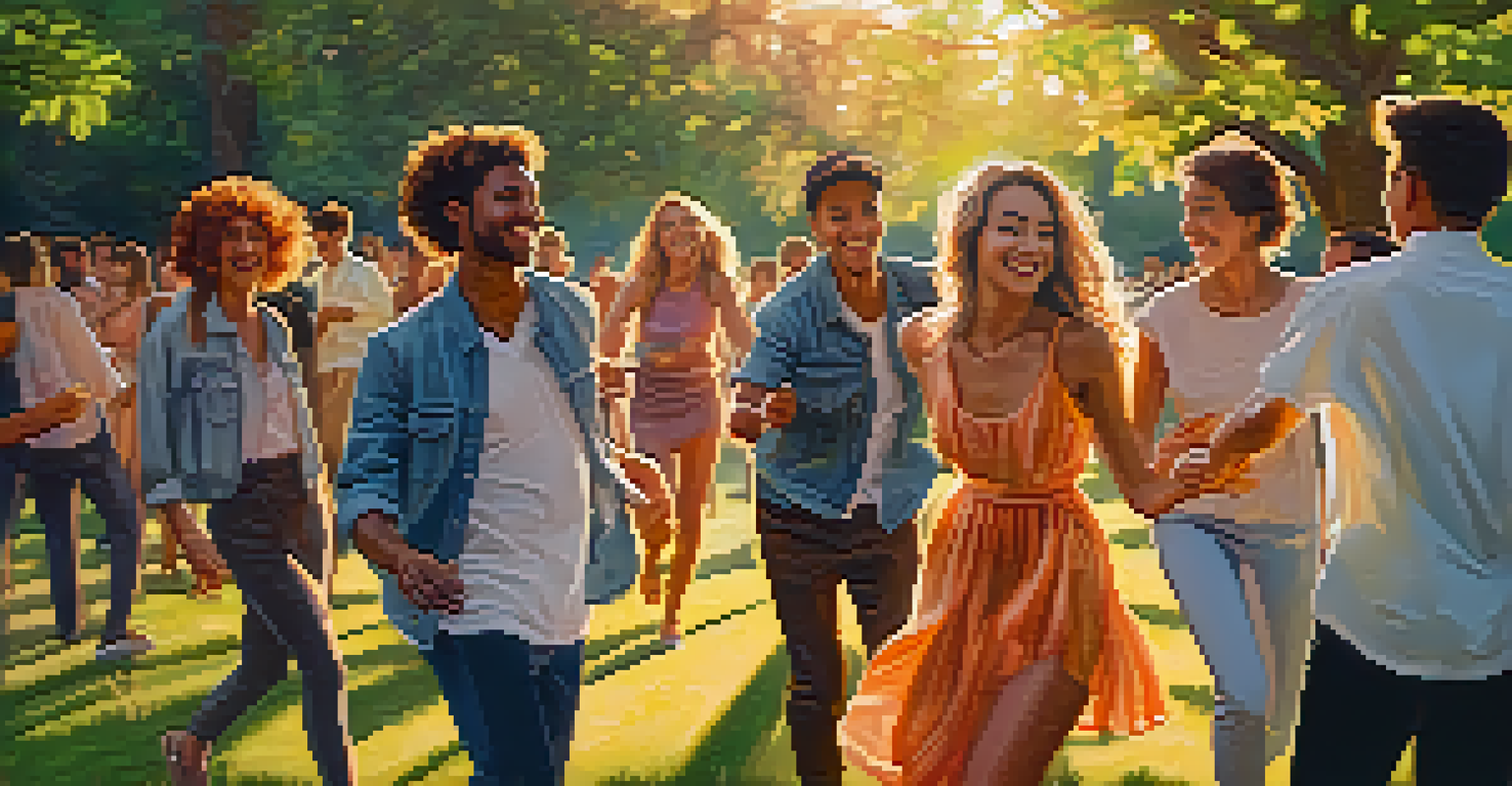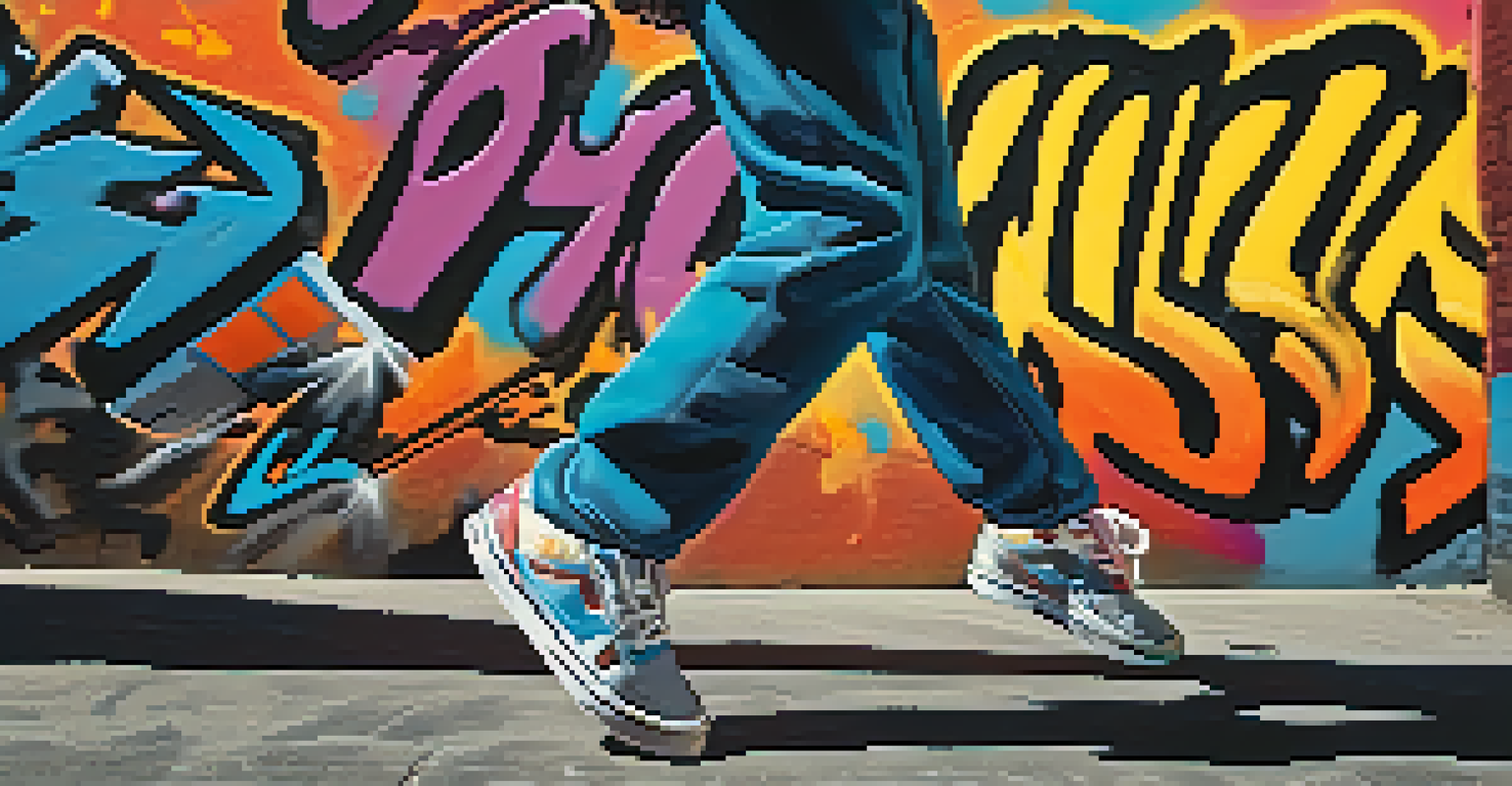The Impact of Dance on Anxiety Reduction and Management

Understanding Anxiety and Its Effects on Daily Life
Anxiety is more than just feeling worried; it can manifest physically and emotionally, affecting daily activities. Many people experience anxiety as a constant state of unease, which can disrupt sleep, relationships, and overall well-being. It’s important to recognize that anxiety can take various forms, from generalized anxiety disorder to situational stress, impacting individuals differently.
Dance is the hidden language of the soul.
In an increasingly fast-paced world, anxiety has become common, making it essential to explore effective management strategies. For many, traditional methods like therapy and medication can offer relief, but they may not resonate with everyone. This is where alternative approaches, such as dance, come into play, providing a creative outlet for expression and stress relief.
By understanding anxiety's impact, we can appreciate the value of holistic practices like dance that promote mental health. Dance not only serves as a form of exercise but also encourages emotional release and connection with oneself and others. This dual benefit makes it a compelling option for those seeking to manage their anxiety in a more engaging way.
The Science Behind Dance and Mood Enhancement
Dance has been shown to trigger the release of endorphins, often referred to as 'feel-good' hormones. These chemicals in our brain act as natural painkillers and mood elevators, creating feelings of joy and relaxation. When we engage in dance, whether through structured classes or freestyle movement, we inadvertently boost our mental state.

Research has demonstrated that physical activity, including dancing, can reduce symptoms of anxiety and depression. According to studies, even moderate exercise can lead to significant improvements in mood and stress levels. Dance does more than burn calories; it provides an outlet for emotional expression, allowing individuals to process feelings in a constructive way.
Dance Enhances Mood and Relieves Anxiety
Engaging in dance triggers endorphin release, providing a natural boost in mood and helping to alleviate symptoms of anxiety.
Moreover, the rhythm and movement involved in dance can serve as a form of meditation, helping to clear the mind and focus on the present moment. This mindfulness aspect is crucial for anxiety management, as it encourages individuals to step away from their worries and immerse themselves in the joy of movement. Such moments of presence can be transformative for someone battling anxiety.
How Dance Classes Foster Community and Support
Participating in dance classes can create a sense of belonging and community, which is vital for mental health. When individuals engage in group dance settings, they connect with others who share similar interests, fostering friendships and support networks. This sense of camaraderie can significantly alleviate feelings of isolation often associated with anxiety.
To watch us dance is to hear our hearts speak.
The shared experience of learning and performing dance routines can also bolster self-esteem and confidence. As individuals progress in their dance skills, they often feel a sense of accomplishment, which can counteract negative self-talk and anxious thoughts. The supportive environment of a dance class encourages individuals to embrace their unique journey, celebrating both successes and challenges.
Additionally, the social interaction involved in dance can lead to the development of healthy relationships, which are essential for emotional well-being. These connections can offer comfort during tough times, reinforcing the idea that one is not alone in their struggles with anxiety. A strong support system can be a game-changer in managing mental health effectively.
Exploring Different Dance Styles for Anxiety Relief
From ballet to hip-hop, different dance styles offer unique ways to express oneself and release pent-up energy. Each genre comes with its own rhythm and movement, allowing individuals to find a style that resonates with their personality and emotional needs. For instance, ballet might appeal to those seeking grace and discipline, while hip-hop could attract those who crave energy and improvisation.
Moreover, dance styles like contemporary or expressive dance encourage personal storytelling through movement, providing a powerful outlet for emotions. This form of expression can be particularly beneficial for those who find it challenging to articulate their feelings verbally. Through dance, individuals can convey joy, sadness, and everything in between, helping to process complex emotions.
Community Support Through Dance Classes
Participating in dance classes fosters a sense of belonging and camaraderie, which is crucial for emotional well-being and managing anxiety.
Trying out various dance styles can also be a fun way to discover more about oneself and what brings joy. Whether it's joining a salsa class or dancing in the living room, the key is to find what feels good and liberating. Such explorations can lead to greater self-discovery and ultimately play a significant role in managing anxiety.
The Role of Freestyle Dance in Emotional Release
Freestyle dance, or improvised movement, offers a unique way to express emotions without the constraints of choreography. This spontaneous form of dance allows individuals to move freely, responding to their feelings in the moment. Many people find that this type of expression helps them release built-up tension and anxiety.
One of the best aspects of freestyle dance is that it requires no formal training or experience. Anyone can participate, regardless of their skill level, making it an accessible way to engage with movement. This freedom can be incredibly liberating, as there's no right or wrong way to dance; the focus is solely on personal expression and enjoyment.
Additionally, freestyle dance encourages individuals to listen to their bodies and tune into their emotional states. This practice can foster greater self-awareness and mindfulness, allowing dancers to understand their feelings better. By embracing the freedom of movement, individuals often find a cathartic release that significantly aids in anxiety management.
Incorporating Dance into Daily Routines for Consistency
To truly harness the benefits of dance for anxiety reduction, consistency is key. Incorporating dance into daily routines doesn’t have to be a chore; it can be as simple as dedicating a few minutes each day to movement. Whether it’s a quick dance break during work or a regular evening class, finding a rhythm can create a comforting routine.
Setting aside time for dance can also serve as a personal escape, a moment to recharge and express oneself. This ritual can be especially beneficial during stressful periods, providing a healthy outlet for emotions. By prioritizing dance, individuals can create a positive habit that contributes to their overall mental well-being.
Freestyle Dance for Emotional Release
Freestyle dance allows for spontaneous expression of emotions, promoting self-awareness and helping to relieve built-up tension and anxiety.
Moreover, sharing dance experiences with friends or family can enhance the joy and motivation behind the practice. Whether it’s inviting loved ones to join in a dance session or simply sharing favorite dance videos, building a community around this activity can reinforce its importance in daily life. Together, these practices can foster a lasting relationship with dance as a tool for anxiety management.
Conclusion: Embracing Dance as a Healing Tool
In conclusion, dance emerges as a powerful ally in the journey of managing anxiety. Its ability to blend physical activity, emotional expression, and community support makes it a multifaceted approach to mental health. By engaging in dance, individuals can foster resilience and find joy in movement, creating a buffer against the stresses of life.
The beauty of dance lies in its adaptability; there’s no one-size-fits-all method. Whether through structured classes or spontaneous movement, everyone can find their unique way to embrace dance. The key is to explore and enjoy the process, allowing dance to become a source of healing and empowerment.

As we recognize the impact of dance on anxiety reduction, it’s essential to encourage others to give it a try. So, put on your favorite song, let loose, and remember that every movement counts in the journey toward better mental health. Dance is not just an art form; it’s a celebration of life and a pathway to emotional freedom.